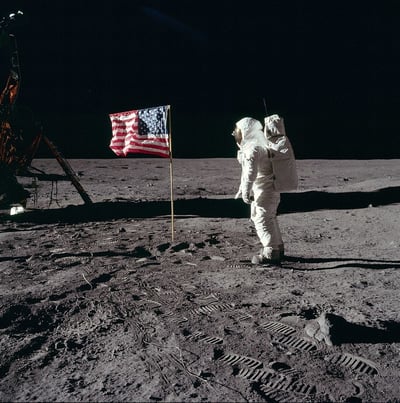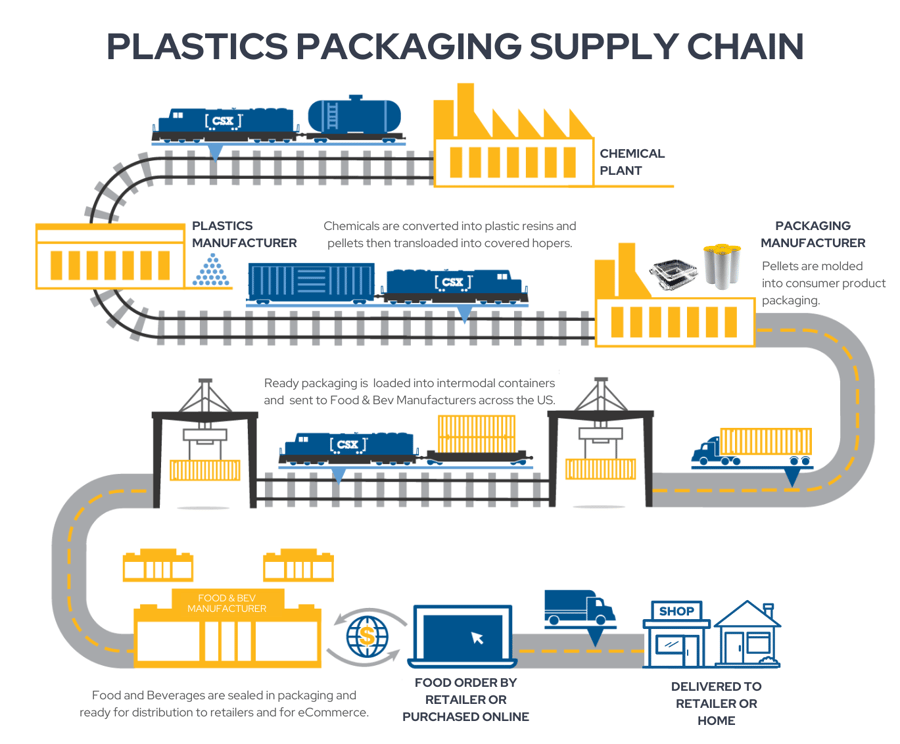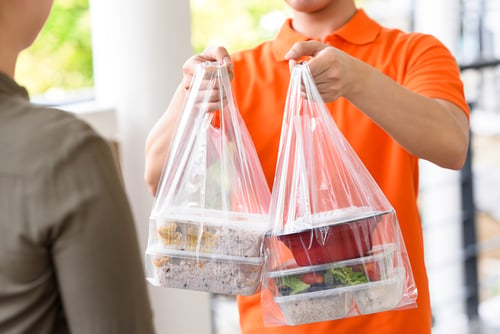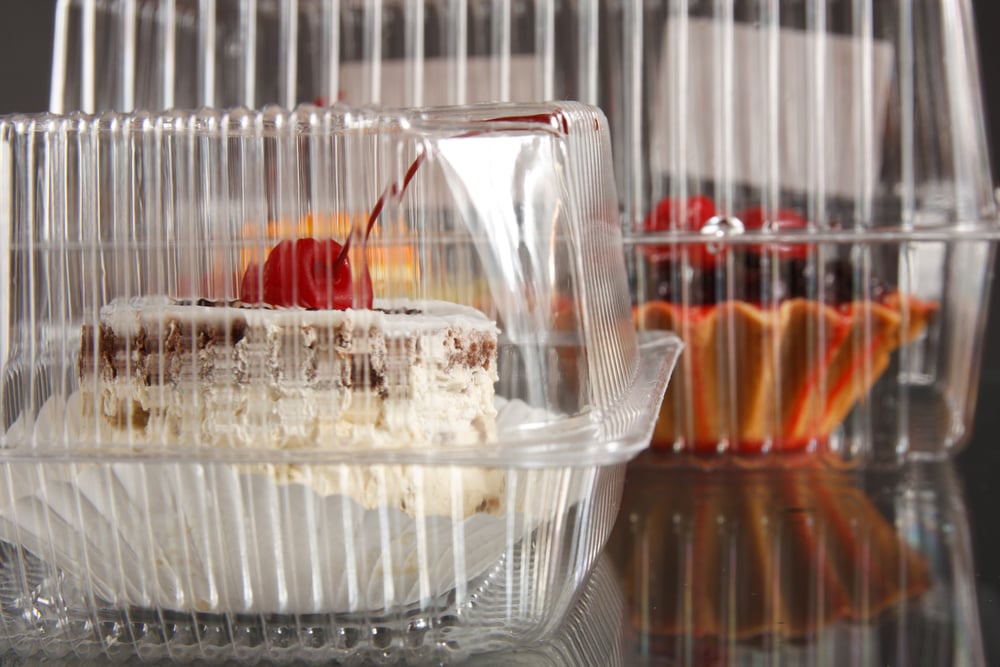The world economy and the landscape of consumerism, changed once plastics became widely used in products and packaging. As we can tell you, the robustness, stackability and protection offered by plastic product packaging lay the solid foundation on which logistics operates.
Let’s get scientific
Plastic, a word that originally meant “pliable and easily shaped,” was first commercially produced in 1869 by businessman John Wesley Hyatt as a substitute for ivory, primarily to cater to the growing popularity of billiards. He refined chemist Alexander Parkes’ invention of cellulose nitrate (cotton fibers dissolved in nitric and sulfuric acid and mixed with vegetable oil) by treating it with camphor. Heralded as the savior of elephants and tortoises, Hyatt had developed a product that successfully imitated natural products like ivory, tortoiseshell, horn, and linen.
The first fully synthetic plastic to incorporate no natural molecules was developed in 1907 by Leo Baekeland. This good insulating material could replace the natural electrical insulator, shellac, and support the rapidly electrifying US. Durable, heat resistant and ideally suited for mechanical mass production, it was called “the material of a thousand uses.”
The plastics industry flourished during WWII, when the US needed to preserve scarce natural resources and prove its industrial might while achieving military victory. The savior of the troops was nylon, a synthetic silk invented by Wallace Carothers in 1936. Nylon was used for parachutes, ropes, body armor, helmet liners, and other military equipment.
Other plastic wonders in the years surrounding the war included polyethylene, which was lightweight and used by the British to insulate radar cabling in aircraft, and polystyrene, used in a new type of rubber and as a thermal insulator and shock absorber.
Riding the wave of increased American spending after the Great Depression and WWII, plastic production surged as it replaced other materials like steel in cars, paper and glass in packaging, and wood in furniture. Americans faced a rosy future of unlimited potential and abundant material wealth.

From hula hoops to plastic milk jugs, from the golf-film visors of the Apollo-era space suits to Kevlar used in racing tires, plastic was an integral part of American life. This photo by Neil Armstrong shows Buzz Aldrin saluting a nylon American flag on the moon.
However, plastic didn’t remain unscathed as perspectives shifted and industries slid into the spotlight for offering cheap and standardized products. A new problem emerged as production gravitated toward single-use, throwaway items, which account for some 40% of plastic usage. The same chemical properties that made plastic durable and useful also made it withstand degradation. Disposing of plastic became challenging.
Concerns over waste and pollution led to the birth of recycling in the 1980s, led by none other than the plastics industry. However, efforts are still imperfect at best, with many plastic items ending in landfills.
Efforts are ongoing to make plastics more environmentally friendly, including research into bioplastics, truly biodegradable plastic, and better recycling. "Green" plastics made from less harmful biological materials like corn starch will help reduce CO2 production and lessen the impact on climate change. We may even eventually be able to convert plastics back into fossil fuels.
Moving the world forward one package at a time
Any way you look at it, plastics have changed our lives. As we replaced natural materials with plastic, products became cheaper, lighter and stronger. We have been able to produce safer, more sustainable devices critical to survival, such as computers, cell phones, and medical devices. Material abundance assures that necessary goods don’t rest in the hands of the privileged elite.
The plastics industry has, and will continue to be, one of the economy's largest and fastest-growing industry sectors. But the ongoing pandemic has changed the outlook. While demand fluctuates in unpredictable ways, plastic usage is still integral to all aspects of life, especially packaging. Whether it’s a handy water bottle to keep you hydrated over the summer months, a bag to keep your trail mix fresh as you hike the hills, or the cup holding your favorite ice-blended vanilla latte, consumers depend on plastic products.
Manufacturers, including recyclers, depend on their supply chains running efficiently and effectively — from raw materials arriving as planned to final products reaching end consumers. The below diagram shows only a bit of this complexity as it pertains to plastics packaging. Unfortunately, the hard reality is that manufacturers have had to adjust at short notice, contending with backlogs, labor shortages and even Russia’s war with Ukraine.
But the guidance to keep moving forward with product innovation and sound business processes comes from experts across the board, including those present at the Plastics Recycling Conference, held March 7–9 in National Harbor, MD.
Rachel Goldstein, North America policy director for food and pet care conglomerate, Mars Inc., takes an exciting view of packaging innovation. “Ultimately our vision is that material still has value. You open a [product]; now that [packaging] becomes new feedstock for a new package or a new product. Just thinking about what that [material] could look like in the future and maintaining the value through its whole lifecycle and whatever its next iteration would be.”
Packaging as hardy as an elephant

Plastic today has gone far beyond imitating ivory. It enables suppliers, plastics processors, converters and brand owners to create consumer product and food servicing packaging, including shipping containers. With this essential versatility, plastic accounts for over one-third of the $700-billion global packaging industry. Most of that is rigid plastic.
Many organizations contend that plastics’ intrinsic properties help reduce the carbon footprint. "Plastics Do More with Less," a video released by the PLASTICS Industry Association, shows how more items made of plastic, which are lighter to transport, can be shipped on fewer trucks resulting in less fuel and lower emissions. For every seven trucks needed to transport paper bags, only one truck is necessary to deliver the same number of plastic bags. In today’s snarled logistics environment, that’s huge.
Keeping it moving is critical
But what happens when a material that can save the elephants, help win wars and offer safe and reliable products to the masses isn't available? When supply chains break down, and orders go unfulfilled?
We probably don’t need to list out the repercussions, as we've all been living with them to some degree over the past few pandemic years, but there are solutions we can offer. Real benefits to working with a 3PL partner with over two decades of experience handling plastic products. One who honors your business and profitability as we do our own.
IL2000’s experience assures expert handling in these areas:
- Raw Materials: By learning your supply chain, we identify and implement the safest and most efficient way to transport plastics raw materials, including hazmat, so they reach your manufacturing and processing facilities in perfect condition.
- Processing & Manufacturing: We enable your processing and manufacturing to run like clockwork by assuring the raw materials arrive on time. No delays. No halted production. We also offer safe and reliable delivery directly to job sites with crews and special handling equipment.
- Packaging: Delivering packaging materials to your process at the right time keeps your production moving smoothly. We have experience with the sensitive needs of plastics products, including food-grade handling requirements. No more interruptions and growing inventories as you wait for packaging to ship your goods.
- Warehousing & Distribution: We facilitate inventory management and distribution in the US and globally, making complex shipping easy while offering real-time freight tracking.
- Visibility: We help you maintain transparency throughout the supply chain. From planning production runs to informing customers about product availability, all parties will know where raw materials and products are at any time and feel confident they will arrive as scheduled. This makes you appear as a more reliable, efficient, and trustworthy partner.
We’ve seen how integral plastic is to the global economy, and we know it's just as crucial to your processing and manufacturing processes.
Let us perform a no-obligation supply chain analysis and start bringing greater efficiency and reliability to your business.

